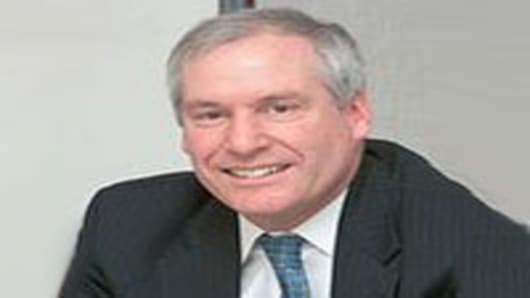A senior Federal Reserve official said Monday that the employment data released last week had reinforced his view that the Fed must act to increase economic growth.
Eric S. Rosengren, president of the Federal Reserve Bank of Boston, said that the Fedshould again expand its holdings of mortgage bonds and Treasury securities, and that the purchases should steadily continue until the Fed was satisfied with the health of the economy.
“You continue to do it until it’s clear that you’re no longer treading water,” Mr. Rosengren said in an interview. “You continue to do it until you have documented evidence that you’re getting growth in income and the unemployment rate consistent with your economic goals.”
The government estimated that payrolls increased by 163,000 in July, more than in the last several months and more than analysts had predicted. But Mr. Rosengren emphasized that several indicators, including the unemployment rate and the share of the population in the work force, had retreated to their levels at the beginning of the year.
“For the last seven months we’ve been treading water. That’s different from what we expected at the beginning of the year,” he said. “I think it’s time to swim to shore.”
But another Fed official, Richard W. Fisher, president of the Federal Reserve Bank of Dallas, said in an interview with Reuters on Monday that he did not support additional monetary stimulus because he did not think it would reduce unemployment. He said the real drag on the economy was a lack of action by fiscal policy makers.
“We have hit a wall and that wall is called Congress,” Mr. Fisher told Reuters.
The Fed said after the most recent meeting of its policy-making committee last week that it would act if the pace of job growth did not improve. The comments by the two officials offered the first glimpse of how the latest jobs data, released two days after the meeting, might affect the Fed’s decision-making.
It is a limited glimpse. Mr. Rosengren and Mr. Fisher occupy opposite ends of the spectrum of Fed officials — Mr. Rosengren already favored new action, while Mr. Fisher has consistently opposed new steps — while the decision rests with a centrist group led by the Fed’s chairman, Ben S. Bernanke.
Moreover, Mr. Rosengren and Mr. Fisher do not hold votes on the committee this year, although they participate in its discussions. Only five of the 12 presidents of the Fed’s regional banks vote in any given year, in addition to Mr. Bernanke and the other six members of the Fed’s board of governors.
But the comments underscore the extent of divisions among Fed officials that have been obscured by the central bank’s efforts to maintain a united public face.
Some officials always vote with the majority, even if they favor a different course of action. And several of the most outspoken officials do not hold votes this year. As a result, the Fed’s decision to take no new action was supported by 11 of the 12 voters. The one dissent came from Jeffrey M. Lacker, president of the Federal Reserve Bank of Richmond, who said the Fed was providing too much stimulus.
Mr. Rosengren expressed frustration with opponents of new action, noting that Fed officials had predicted that they would fail to meet both of their goals this year — not only is unemployment too high, but inflation is too low.
And he said that even officials who doubt the Fed’s ability to foster job growth should support action to raise the rate of inflation from the current pace of about 1.8 percent to the 2 percent level the Fed considers most healthy.
“The one thing I think all economists agree on is that the Fed should be able to have an impact on inflation,” he said. “We’re missing on the inflation target. I think all economists would agree that we should take action to get back to the inflation target.”
Mr. Rosengren’s proposal for new action would be a significant shift from earlier rounds of asset purchases, when the Fed announced in advance how much money it would spend and over what period of time. Mr. Rosengren and other officials, including John C. Williams, president of the Federal Reserve Bank of San Francisco, say that the focus instead should be on results.
He acknowledged that some economists, including some Fed officials, were skeptical about the central bank’s ability to stimulate the economy. They argue that reduced borrowing costs have at best an indirect impact on problems including the decline in government spending, concern about the European recession and the efforts of many consumers to pay their existing debts.
But Mr. Rosengren, who holds a doctorate in economics from the University of Wisconsin, said the available research showed clear evidence that the Fed’s previous asset purchases had economic benefits, including increased asset prices, lower borrowing costs and a weaker dollar.
“Exports are important, and so if we have a new program it’s probably going to slow down the appreciation that we’ve experienced in the dollar, which would help support our export markets,” Mr. Rosengren said.
Mr. Rosengren said he did not have a firm view on what kind of measuring stick the Fed should use for a new program of asset purchases. But he suggested the Fed could target a minimum rate of nominal growth — economic growth plus inflation — of 4.5 percent. The government estimates the rate of nominal growth in the 2012 second quarter at 3.1 percent.
That approach is likely to face resistance from officials including Mr. Bernanke, who has expressed little tolerance for pushing inflation above 2 percent.


